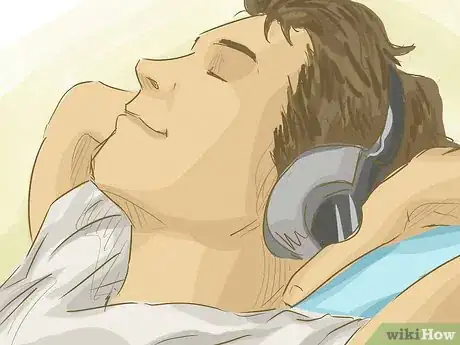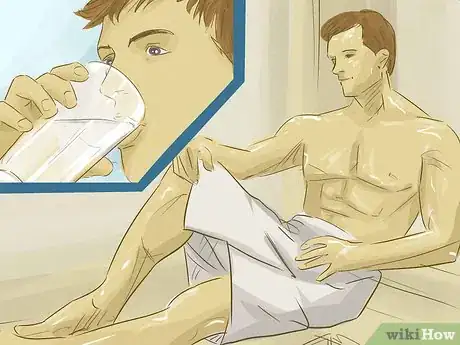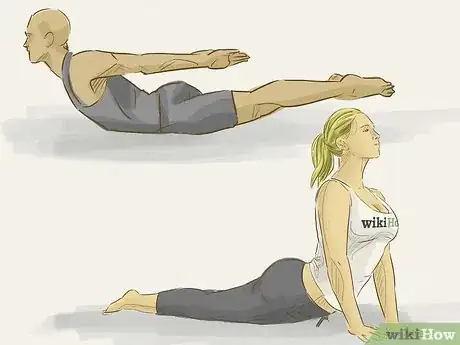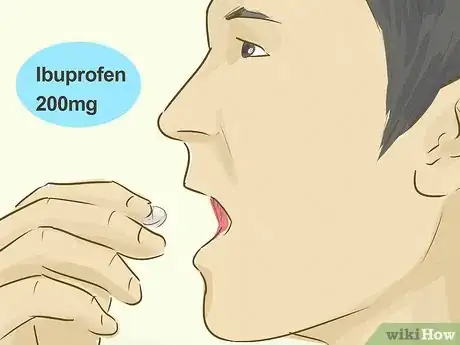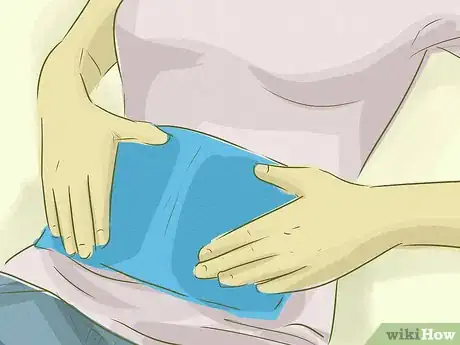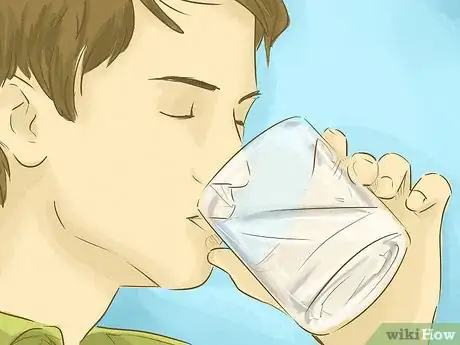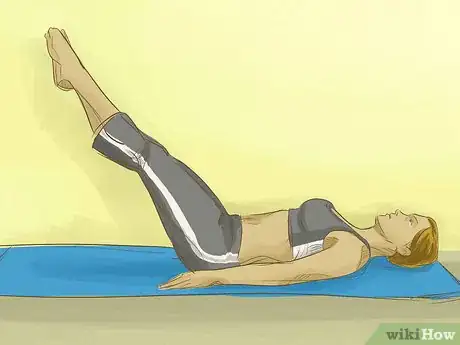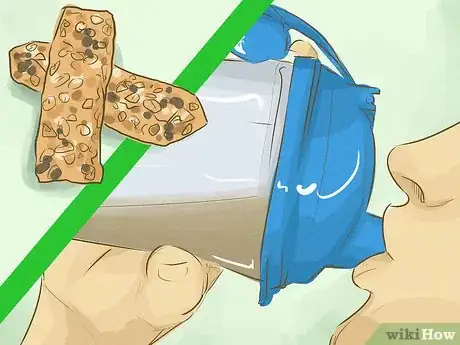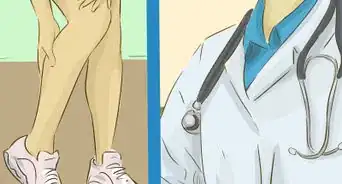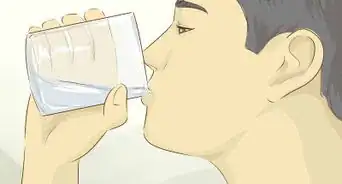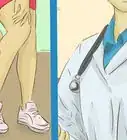This article was co-authored by Christopher Carreiro. Christopher Carreiro is a Certified Personal Trainer and the Founder of Aum Training Center in Boston, Massachusetts. With over 10 years of experience, Chris specializes in helping busy people look and feel years younger. He does so by integrating holistic nutrition and mindfulness into life-changing transformation programs. In addition to being a Precision Nutrition Level 1 Certified Coach, Chris is a Certified Strength and Conditioning Specialist (CSCS). He also has a Master’s degree in Psychology with a specialization in life coaching.
wikiHow marks an article as reader-approved once it receives enough positive feedback. In this case, several readers have written to tell us that this article was helpful to them, earning it our reader-approved status.
This article has been viewed 394,495 times.
After you work out, play sports, or simply start doing different chores during the day, you may notice sore stomach muscles. A lack of blood flow and muscle inflammation cause the sore muscles. If you’re trying to keep them from hampering your schedule, you can do things to help promote blood flow and to reduce inflammation. Also, you can take preventative actions to keep them from getting sore again.
Steps
Promoting Blood Flow
-
1Give yourself a break. If you noticed that you’re incredibly sore, take a day off of whatever it is that made you sore. This will rejuvenate your muscles by allowing them to mend tissue torn while exercising.
- Sore abs from working out too much is typically temporary. Ease off your workouts to allow your body to recover.
-
2Heat your abs. Use a heating pack or sit in a steam room to help relax your sore muscles. Be careful not to leave heat on for too long or you could burn yourself. Be sure to read the directions on your heating pack before using it. Dry saunas and hot yoga may also be useful.
- If you use a steam room to heat your muscles, make sure you drink extra water because the steam will dehydrate you. If you’re dehydrated, your muscles will take longer to heal.
Advertisement -
3Stretch them out. Depending on the severity of your soreness, stretching is a great way to relieve tightness through your abdominals. Do stretches that focus on your core muscles. If they cause you pain, stop and talk to a doctor.
- Lay on your back with your arms and legs extended. Make your body as long as you can to feel the stretch.
- Lean back over your chair. Lean back only until you feel the stretch. Be careful not to push too far.
-
4Take a yoga class. These classes are breathing and stretching intensive. They will help promote blood flow throughout the class and beyond. Make the instructor aware of your situation before class starts so that they can focus on core stretches.
- Do the upward facing dog stretch. This common yoga pose starts with you laying on your stomach. From here, place your hands under your shoulders and push up until you feel the stretch. Look up toward the ceiling for a heightened affect.[1]
- Do the locust pose. This yoga pose also requires you to lay on your stomach. Lay your arms next to your body and lift your head, and upper torso away from the floor. You want to be resting on your pelvis.[2]
Reducing Swelling
-
1Take Ibuprofen. 200 mg of ibuprofen in the morning after breakfast. Be sure to talk to a doctor before doing this to be sure you don’t have any allergies. If ibuprofen isn’t available, acetaminophen will have the same affect. Both of these help relive sore muscles through their anti-inflammatory ingredients.[3]
-
2Take an Epsom salt bath. Spend 30 minutes in a tub of hot water and Epsom salt. It also decreases muscle inflammation. While in the tub, rub your abdominal muscles firmly to help blood flow into your muscles.
- There is no evidence that Epsom salts flush toxins. However, many people report feeling better after Epsom salt baths.
- Alternatively, soak a damp washcloth in Epsom salt and apply it to the sore area for 15-20 minutes.[4]
-
3Ice your muscles. Icing helps reduce inflammation if used within the first 72 hours of workout or injury. It helps to reduce pain if applied for 10-minutes intervals. Do not ice directly before you plan on moving a lot—you’ll be prone to injury if you try to move too much when your muscles are cold.
- Never apply ice directly to the skin and never apply it for more than 20 minutes at a time.[5]
Preventing Sore Abdominals
-
1Hydrate well. Staying properly hydrated will help your muscles recover faster. Drink at least two bottles of water before you work out, and drink half an ounce of water per pound of body weight throughout the day. Avoid drinking tea and coffee because these will dehydrate you.
-
2Raise your legs. Before doing anything that is ab intensive, you should avoid sitting or standing for too long. Take 5 minutes before your workout to put your legs up while you lay on your back. This will ensure blood flow to the upper portions of the body. The blood flow will help flush the muscles.
-
3Re-fuel your body properly. Protein is a very important factor in muscle recovery. Be sure to eat a protein rich meal (about 20 grams) within 30 minutes of your workout. Protein bars and shakes are an easy way to get this amount of protein on the go.
Expert Q&A
-
QuestionAre there any changes I can make to my diet to help with sore muscles?
 Christopher CarreiroChristopher Carreiro is a Certified Personal Trainer and the Founder of Aum Training Center in Boston, Massachusetts. With over 10 years of experience, Chris specializes in helping busy people look and feel years younger. He does so by integrating holistic nutrition and mindfulness into life-changing transformation programs. In addition to being a Precision Nutrition Level 1 Certified Coach, Chris is a Certified Strength and Conditioning Specialist (CSCS). He also has a Master’s degree in Psychology with a specialization in life coaching.
Christopher CarreiroChristopher Carreiro is a Certified Personal Trainer and the Founder of Aum Training Center in Boston, Massachusetts. With over 10 years of experience, Chris specializes in helping busy people look and feel years younger. He does so by integrating holistic nutrition and mindfulness into life-changing transformation programs. In addition to being a Precision Nutrition Level 1 Certified Coach, Chris is a Certified Strength and Conditioning Specialist (CSCS). He also has a Master’s degree in Psychology with a specialization in life coaching.
Certified Personal Trainer Anything that you can do in terms of eating anti-inflammatory foods will help. Things like omega-three rich foods, salmon, sardines, turmeric, organic berries, cherries, ginger—all those foods are anti-inflammatory.
Anything that you can do in terms of eating anti-inflammatory foods will help. Things like omega-three rich foods, salmon, sardines, turmeric, organic berries, cherries, ginger—all those foods are anti-inflammatory. -
QuestionHow do you get rid of soreness?
 Michele DolanMichele Dolan is a BCRPA certified Personal Trainer in British Columbia. She has been a personal trainer and fitness instructor since 2002.
Michele DolanMichele Dolan is a BCRPA certified Personal Trainer in British Columbia. She has been a personal trainer and fitness instructor since 2002.
Certified Fitness Trainer Time, saunas, massage, mild cardio and staying well-hydrated will help get rid of sore muscles.
Time, saunas, massage, mild cardio and staying well-hydrated will help get rid of sore muscles. -
QuestionHow do you get rid of the soreness after working out?
 Michele DolanMichele Dolan is a BCRPA certified Personal Trainer in British Columbia. She has been a personal trainer and fitness instructor since 2002.
Michele DolanMichele Dolan is a BCRPA certified Personal Trainer in British Columbia. She has been a personal trainer and fitness instructor since 2002.
Certified Fitness Trainer Alternating heat and cold therapy using saunas and cold showers can help, as can massage and drinking plenty of fluids. Steady moderate cardio can help flush the muscles.
Alternating heat and cold therapy using saunas and cold showers can help, as can massage and drinking plenty of fluids. Steady moderate cardio can help flush the muscles.
References
- ↑ http://www.yogajournal.com/pose/upward-facing-dog/
- ↑ http://www.yogajournal.com/pose/locust-pose/
- ↑ http://www.everydayhealth.com/drugs/ibuprofen
- ↑ Christopher Carreiro. Certified Personal Trainer. Expert Interview. 2 March 2021.
- ↑ http://www.refinery29.com/ice-sore-muscles-tips
About This Article
To treat sore ab muscles, start by taking a day off from working out and applying a heating pad to the area to soothe and loosen the tight muscles. Over-the-counter medications like ibuprofen and acetaminophen can provide quick pain relief, and soaking in a warm Epsom salt bath for 30 minutes can help reduce inflammation and soothe achy muscles. Gentle stretching can also effective, but if your abs hurt a lot when you try to stretch, it's better to skip it and stick to resting the muscles. For tips on preventing sore abs in the future, read on!
